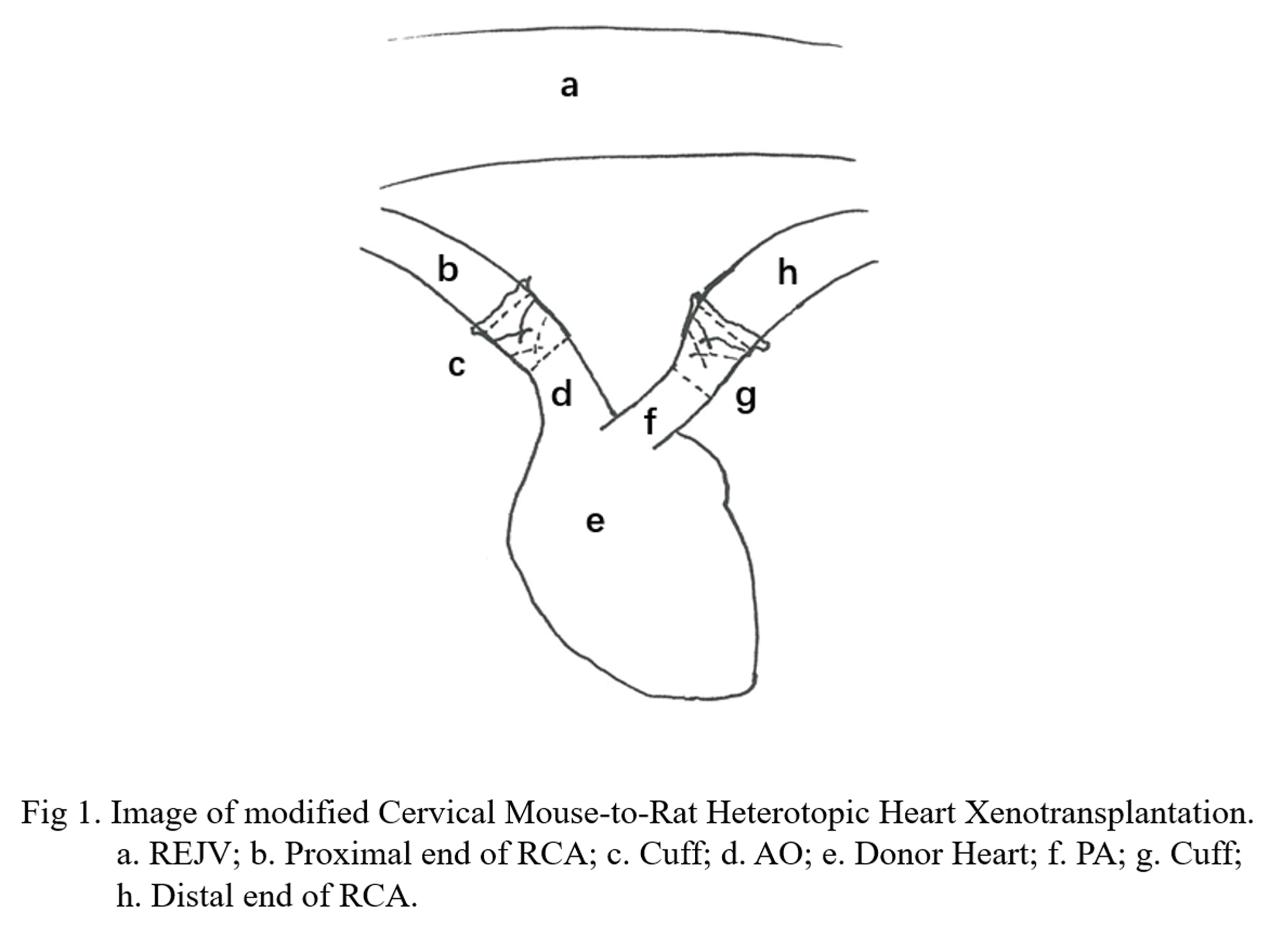Cervical Total Arterial Anastomosis Mouse-to-Rat Heterotopic Heart Xenotransplantation
Organ Transplant Center, The First Affiliated Hospital, Sun Yat-sen University, Guangzhou, China
Meeting: 2020 American Transplant Congress
Abstract number: A-261
Keywords: Heart/lung transplantation, Mice, Rat
Session Information
Session Name: Poster Session A: Xenotransplantation
Session Type: Poster Session
Date: Saturday, May 30, 2020
Session Time: 3:15pm-4:00pm
 Presentation Time: 3:30pm-4:00pm
Presentation Time: 3:30pm-4:00pm
Location: Virtual
*Purpose: Xenotransplantation is an effective way to solve the problem of donor shortage. However, clinical use of xenotransplantation is currently limited due to immunological challenges. It is very clear that there is a great need for animal studies to overcome various problems observed after xenotransplantation. Heart xenotransplantation is the most common small animal models for xenotransplantation studies. Because of its extensive use, any small improvements of method would have a significant impact on replacement, reduction and refinement. The purpose of this study was to create a more optimized protocol to establish the most suitable mouse-to-rat cervical heart xenotransplantation model using the cuff technique.
*Methods: Twenty male Balb/c mice weighing from 20-25 g were used as donors, and twenty male Sprague-Dawley rats weighing from 150-200 g were used as recipients for heterotopic heart xenotransplantation models. Recipients were randomly assigned to two groups: conventional group and modified group. For the conventional group, the donor heart pulmonary artery(PA) and recipient right external jugular vein(REJV) , donor heart ascending aorta (AO) and recipient right common carotid artery (RCA) were connected through cuff technology. For the modified group, the donor heart AO and recipient proximal end of RCA, donor heart PA and recipient distal end of RCA were connected through cuff technology(Fig 1). Postoperative outcome, operation time, vascular anastomosis time , and cold ischemia time were recorded.
*Results: Operation time (52.3±2.5min vs. 65.1±3.1min, p<0.05), vascular anastomosis time (15.7±1.4min vs. 17.8±0.89min, p<0.05), and cold ischemia time were significantly shorter (20.4±1.3min vs.23.2±1.6min,p<0.05) with the modified procedure. There was a tendency for less surgical trauma and influence on the blood supply of the receptor brain in the modified group, but there were no differences in success and survival rates.
*Conclusions: We proposed a novel surgical procedure for cervical Mouse-to-Rat Heterotopic Heart Xenotransplantation. It simplified operation procedure and improved right cervical blood circulation of the receptor, which resulted in significantly less operation and cold ischemia time, less tissue trauma and influence on the blood supply of the receptor brain than conventional method. It was a major improvement in 3Rs(replacement, reduction and refinement), which was closer to the ideal state of “simple operation and good repeatability” of animal models.
To cite this abstract in AMA style:
Ren A, Li Z, Zhang X, Deng R, Ma Y. Cervical Total Arterial Anastomosis Mouse-to-Rat Heterotopic Heart Xenotransplantation [abstract]. Am J Transplant. 2020; 20 (suppl 3). https://atcmeetingabstracts.com/abstract/cervical-total-arterial-anastomosis-mouse-to-rat-heterotopic-heart-xenotransplantation/. Accessed December 16, 2025.« Back to 2020 American Transplant Congress

